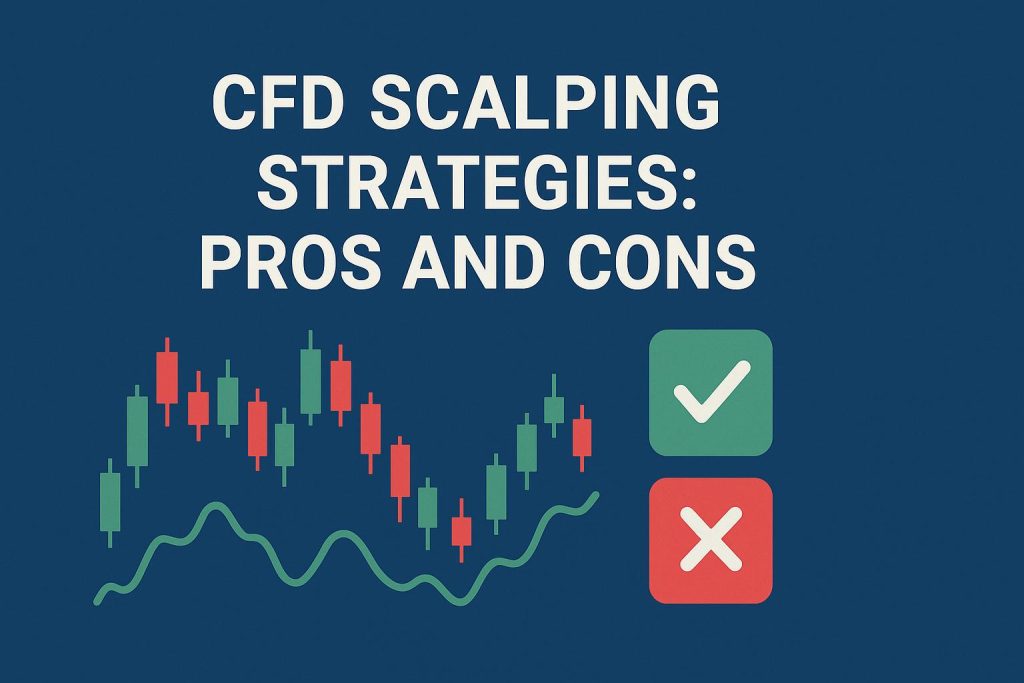Understanding CFD Scalping Strategies
Contracts for Difference (CFDs) offer a modern approach to trading, where the focus is on deriving profit from price changes in financial markets without the need to own the underlying asset. Among the myriad strategies that traders employ, scalping stands out for its immediacy and frequency. With scalping, traders look to capitalize on small price fluctuations within the market, engaging in a rapid exchange of trades that often result in positions being closed within minutes. This article explores the intricacies of scalping within the context of CFD trading, shedding light on both the merits and drawbacks of such an approach.
Overview of CFD Scalping
Scalping, as a trading method, zeroes in on minimal market movements. Traders who specialize in scalping—the scalpers—commit to multiple trades over a condensed timeframe. Typically, these positions have brief lifespans, often culminating within minutes. The primary ambition of scalping is to accrue minor profits on a consistent basis, with the cumulative gains over time being the ultimate target. CFDs inherently lend themselves to a scalping approach due to their inherent flexibility, the leverage they provide, and their ready accessibility to a host of diverse markets, leading to an adaptable and nimble trading process.
Pros of CFD Scalping Strategies
Quick Turnaround: One of the prominent advantages of scalping is the brisk execution of trades. This allows traders to quickly enter and exit positions, sharply curtailing their exposure to fluctuating market risks. For those who prefer to avoid the uncertainties of holding positions overnight, this can be particularly appealing.
Leveraged Trading: CFDs offer the unique benefit of leverage. This means traders can exert control over more substantial positions by utilizing a relatively modest initial investment. In instances where trades are adeptly executed, this leverage serves to potentially magnify the returns, making the prospect of significant profits a tangible reality.
Diverse Market Access: Another strength of CFDs lies in their ability to span a wide array of markets. Scalping strategies, therefore, can be seamlessly applied to forex, stocks, indices, and commodities. This diverse market accessibility allows traders to capitalize on opportunities across varying asset classes, enhancing the potential for profitable trades.
High Trade Frequency: Intrinsic to scalping is a high frequency of trades. Scalpers engage in numerous transactions daily, affording them multiple opportunities to claim small but numerous gains. This frequency can contribute to an impressive overall profitability when compounded over time.
Cons of CFD Scalping Strategies
Transaction Costs: The high-frequency nature of scalping inevitably leads to substantial transaction costs. This includes spreads and commissions that come with each executed trade. For strategies that result in only marginal profits, these costs can noticeably eat into overall returns.
Market Noise: Successfully implementing a scalping strategy necessitates the ability to distinguish between genuine price fluctuations and market noise. The latter can often masquerade as potential opportunities, complicating the trader’s decision-making process and potentially leading to unprofitable trades.
High Stress Levels: The fast-paced environment that scalping demands can be mentally taxing. It requires rapid decision-making and an unwavering concentration, which can be overwhelming. Not all traders might resonate with or sustain the high-pressure demands that scalping places upon them.
Slippage Risk: In the dynamic realm of fast-moving markets, the risk of slippage becomes pronounced. Slippage occurs when trades are executed at a price different from what was initially intended. For scalpers operating in volatile markets, this can drastically affect profitability, turning potential gains into unexpected losses.
Conclusion
The exploration of CFD scalping strategies unveils both promising possibilities and inherent challenges for traders. On one hand, CFD scalping facilitates the opportunity for active engagement with markets, harnessing leverage to maximize potential gains. On the other hand, successful scalping necessitates a refined understanding of market mechanics, alongside an adeptness at risk management. As traders contemplate diving into CFD scalping, it is crucial to employ a reputable trading platform and potentially seek guidance from seasoned experts to refine their techniques and bolster strategic outcomes.
For those keen to delve deeper into CFD trading and scalping strategies, expanding one’s knowledge through educational resources such as Investopedia or platforms dedicated to financial market analysis can be highly insightful. As with any trading method, thorough preparation and a well-informed stance are foundational elements before immersing oneself into scalping or any chosen trading strategy. By doing so, traders can better navigate the landscape of financial markets and position themselves strategically for success.
This article was last updated on: August 28, 2025







